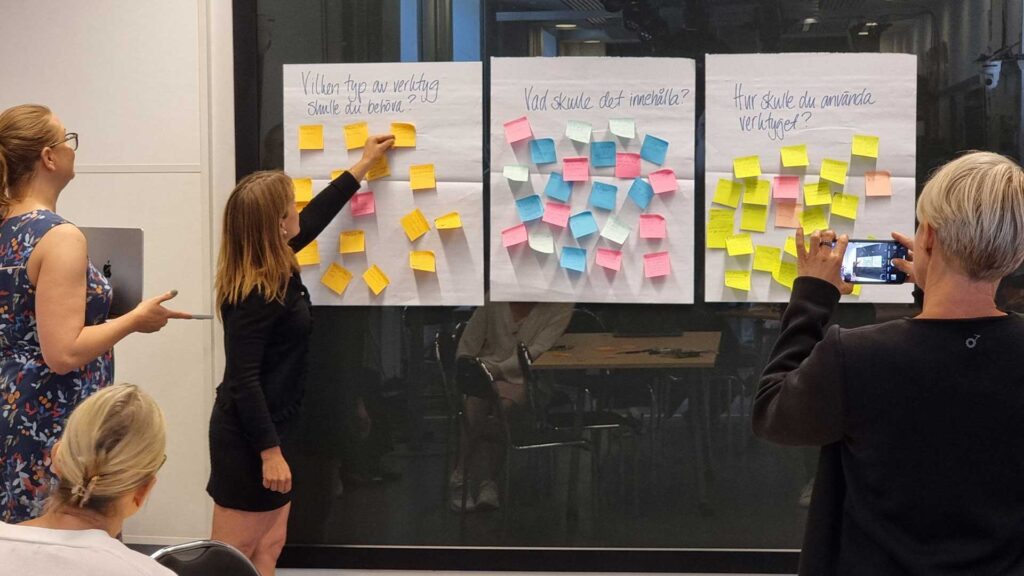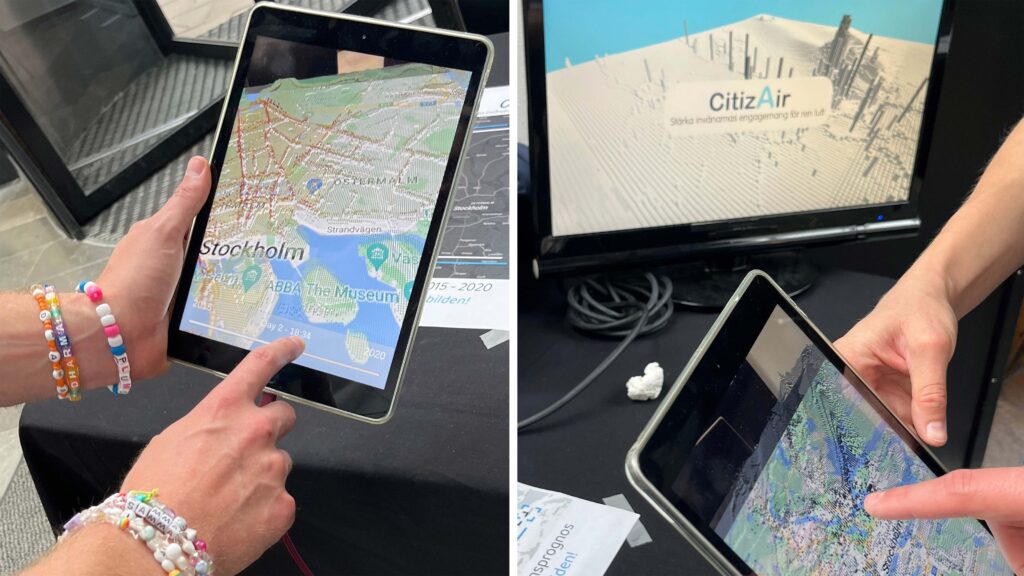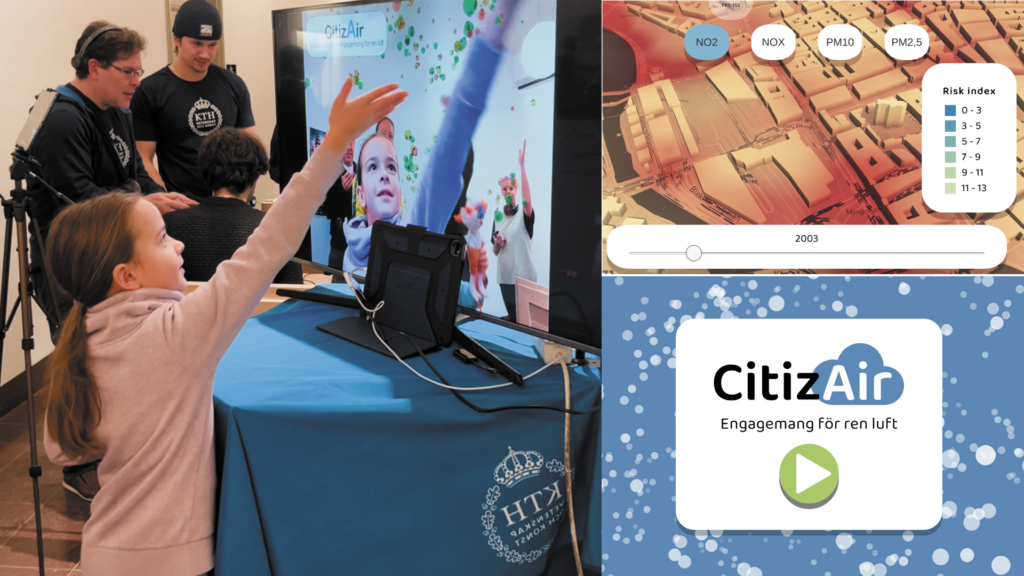Next autumn, everyone in Stockholm will be able to learn about air pollution via their smartphones and interactive billboards around the city, helping them to choose the healthiest route. The new tool is part of the CitizAir project in which researchers and public engagement specialists are collaborating with Stockholmers to visualize air pollution data.

Compared with larger cities the air quality in Stockholm is relatively good, but there is still much room for improvement. The aim of the CitizAir project is to develop an interactive and immersive augmented reality experience that combines pollution data, public screens in the city and a free public app on people’s phones. The new visualization tool is being co-created together with citizens of Stockholm to ensure that their interests and needs are taken into account. Its four target groups are; cyclists, families with small children, school pupils and vulnerable people, i.e. people with asthma and allergies.
Since the project’s start in late 2021 several co-creation workshops have been held with groups of citizens and stakeholder representatives, and by 2024 Stockholm’s air quality will be interactively displayed on screens across the city. In this way, citizens will have access to knowledge about air quality in Stockholm and, by using the new visualization tool, be able to make informed decisions about which route and means of transportation around the city would be the healthiest.
Throughout the project we are engaging with those who live, commute or spend time in the city. In the long term, they will be empowered and also better prepared to discuss air quality and to affect environmental decisions and policies, says Mario Romero, Project Coordinator for CitizAir at KTH Royal Institute of Technology.
Putting citizen’s ideas into practice
The levels of air pollution vary a lot in Stockholm, depending on the season, geography and over time. Increased awareness and knowledge about air pollution may contribute to changes in behaviour and more well-informed debate, ultimately resulting in better air quality.
SLB-Analys at the Department for the Environment within the City of Stockholm carries out air pollution measurements on a daily basis. The two air pollutants that affect Stockholmers’ health the most are nitrogen dioxide and microparticles. The data obtained from these measurements is open and available via the app LUFT Stockholm – AIR Stockholm, and will form the basis of the new visualization tool.
Joakim Rasmuson, a developer and interaction designer, has been working to transfer all of the creative ideas and input gathered from the co-creation workshops into a visualization tool. A beta version of the tool will be ready in early 2024. At that point all of the workshop participants will be invited to test the tool and provide feedback. See the calendar for more information.
A sneak peak and the conceptual idea of the tool was presented at the European Researchers’ Night festivities (ForskarFredag) in Stockholm on 29 September. At the event visitors could test the prototype to see how air pollution in Stockholm varies geographically and over time. Many of the visitors were very interested and wanted to learn more about air quality and to have more specific information about what the air looks like near their school or work place. The public launch of the new visualization tool will take place in autumn 2024 at ForskarFredag on 27 September.


Open data and exploitation of results
Everything that is developed within CitizAir will be published openly and be freely accessible and usable worldwide. The project will therefore contribute to the sustainable development of cities, and consequently to several of the UN Sustainable Development Goals.
Get involved!
If you would like to learn more about CitizAir and get involved, please contact VA’s Project Manager, Maria Hagardt, or Joakim Rasmuson.
The project is financed by Formas, the Swedish research council for sustainable development.
